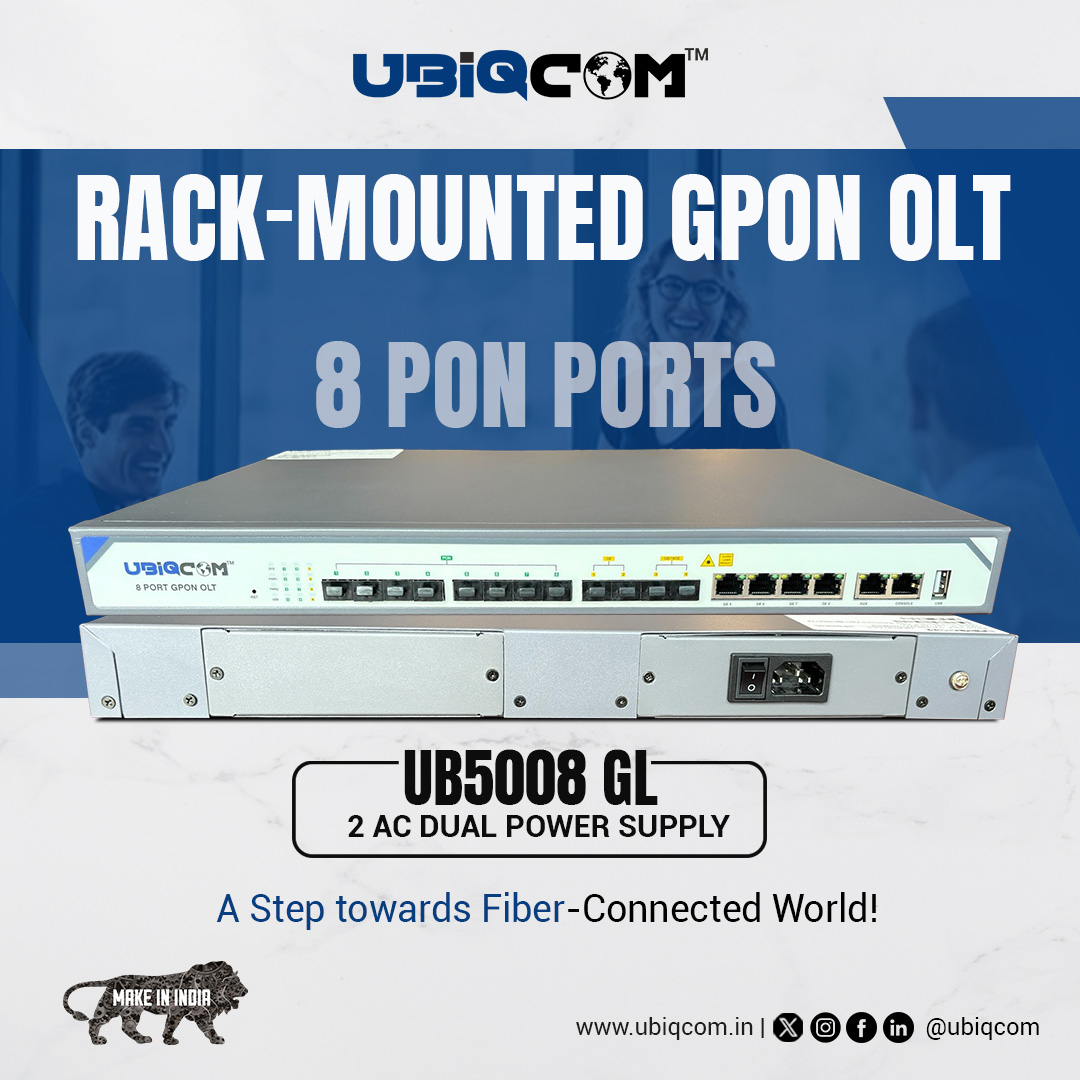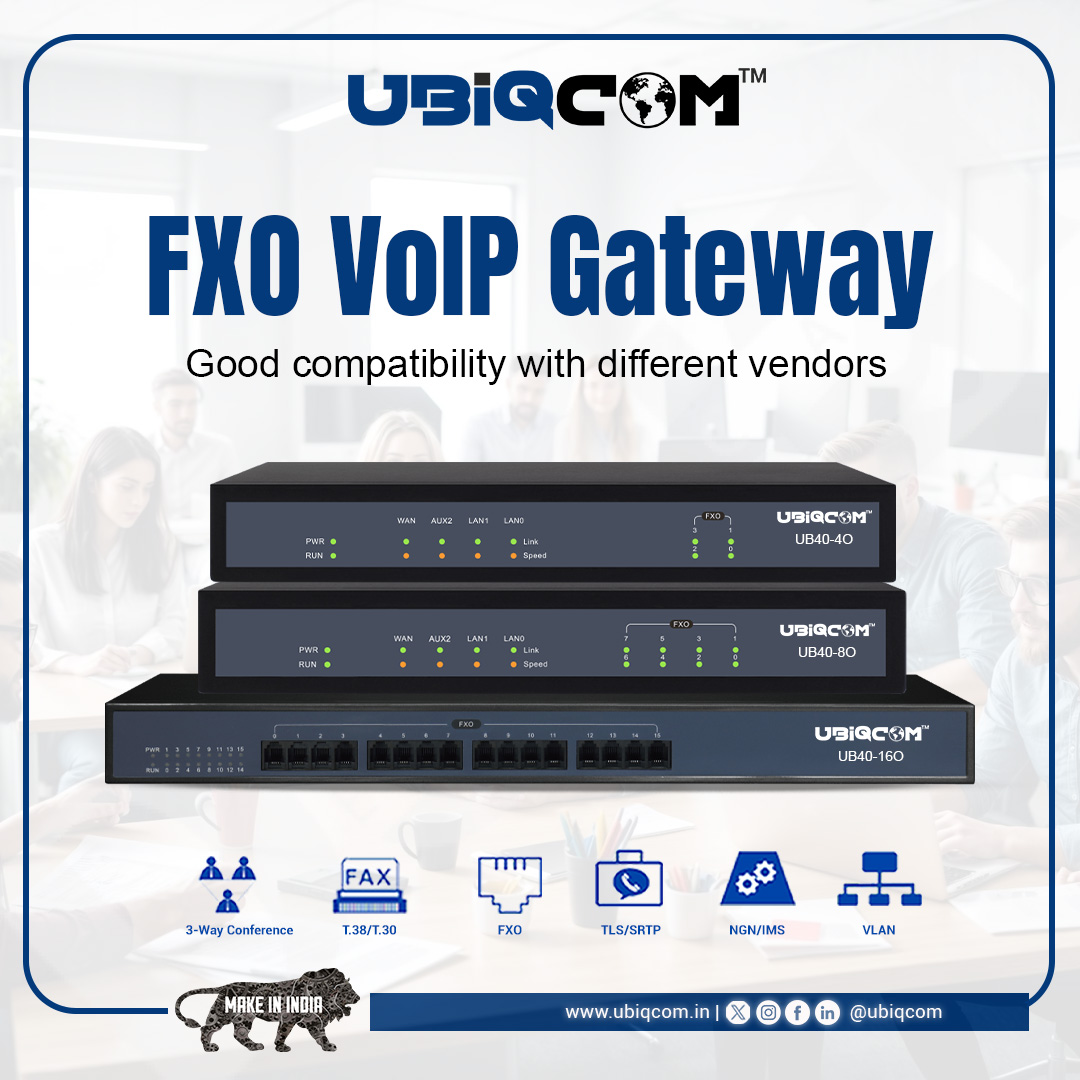Unlocking the Power of 8 Port GPON OLT for Scalable and Reliable FTTH Networks

Strong 8k brings an ultra-HD IPTV experience to your living room and your pocket.
In the rapidly evolving world of broadband connectivity, the demand for high-speed internet and seamless data transmission is higher than ever. For Internet Service Providers (ISPs), telecom operators, and enterprise network builders, selecting the right optical line terminal (OLT) is crucial to meeting growing user expectations. Among the various OLT configurations, the 8 Port GPON OLT stands out as a robust, scalable, and high-performance solution for deploying next-generation fiber-to-the-home (FTTH) services.
This blog dives into the benefits, features, applications, and deployment considerations of the 8 Port GPON OLT, helping decision-makers understand its role in enabling efficient and future-ready network infrastructure.
What Is an 8 Port GPON OLT?
A GPON (Gigabit Passive Optical Network) OLT is the central device in a GPON architecture that connects to multiple Optical Network Units (ONUs) or Optical Network Terminals (ONTs) via optical splitters. The OLT acts as the brain of the network, managing and coordinating data transmission between the core network and end users.
An 8 Port GPON OLT refers to an OLT device equipped with eight PON ports. Each port can typically support up to 128 ONUs/ONTs through passive splitters, allowing the 8-port OLT to serve more than 1000 subscribers, depending on the network design and split ratio.
Key Features of 8 Port GPON OLT
1. High Subscriber Capacity
With eight PON ports and support for up to 128 ONUs per port, an 8 Port GPON OLT can potentially serve over 1024 subscribers. This makes it an ideal solution for medium to large-scale FTTH deployments, residential complexes, or suburban areas.
2. Flexible Uplink Interfaces
Most 8 Port GPON OLTs offer multiple uplink interfaces, such as 1GE and 10GE SFP/SFP+ slots, enabling flexible backhaul connectivity to core networks or internet gateways.
3. Advanced Traffic Management
Integrated support for Quality of Service (QoS), VLAN tagging, IGMP snooping, dynamic bandwidth allocation (DBA), and rate-limiting allows operators to manage traffic effectively and ensure consistent performance.
4. High Reliability and Redundancy
Many devices feature hot-swappable power supplies, dual power inputs (AC/DC), and fan-based cooling for enhanced reliability and uninterrupted service.
5. User-Friendly Management
Support for standard management interfaces like CLI, SNMP, Telnet, and web-based GUI makes it easy to configure, monitor, and manage the network remotely.
Advantages of Deploying an 8 Port GPON OLT
1. Cost-Efficient Scaling
Instead of investing in multiple 4-port or 2-port OLTs, a single 8 Port OLT provides better economies of scale. It reduces rack space usage, simplifies management, and lowers total cost of ownership (TCO).
2. Space Optimization
Compact design and high-density port configuration make the 8 Port GPON OLT suitable for data centers or remote cabinets where rack space is limited.
3. Future-Proof Infrastructure
With growing demand for bandwidth from 4K streaming, online education, cloud gaming, and smart home devices, the 8 Port OLT supports future expansion without hardware overhaul.
4. Energy Efficient
Leading OLT models are designed for low power consumption and thermal efficiency, which helps reduce operational costs over time.
Typical Applications
The versatility of an 8 Port GPON OLT makes it suitable for a wide range of deployment scenarios:
- Residential Broadband: Delivering high-speed internet to housing societies, gated communities, and townships.
- Enterprise Networks: Connecting business parks, co-working spaces, or educational institutions to a central office.
- Rural Broadband Projects: Cost-effectively extending fiber networks to underserved areas under government-funded initiatives.
- Hospitality Sector: Supporting voice, video, and internet services in hotels and resorts.
- Smart Cities: Acting as the core for IoT connectivity, surveillance systems, and municipal internet infrastructure.
Deployment Considerations
When choosing and deploying an 8 Port GPON OLT, there are several factors network planners should evaluate:
1. Subscriber Load and Split Ratio
To ensure optimal performance, calculate the number of users per PON port based on expected bandwidth consumption. In high-density urban deployments, a 1:64 split ratio is common, while rural areas may support 1:128.
2. Redundancy and Backup
Ensure the OLT is backed by uninterruptible power supplies (UPS), has dual power options, and is placed in a well-ventilated environment for reliability.
3. Compatibility with ONUs
Choose GPON OLTs that are interoperable with various ONU/ONT brands and models to maintain flexibility and avoid vendor lock-in.
4. Centralized Management
For large networks, integration with a centralized Network Management System (NMS) or Element Management System (EMS) is crucial for remote diagnostics, firmware upgrades, and fault management.
5. Security Features
Enable authentication mechanisms like SNMPv3, port security, MAC filtering, and secure access protocols to safeguard the network against threats.
Why Choose an 8 Port GPON OLT for Your Network?
Choosing an 8 Port GPON OLT gives your network the agility and robustness it needs to handle increasing user demand without compromising performance. Whether you are an ISP expanding into new markets, a telecom operator upgrading legacy infrastructure, or a system integrator deploying a smart campus, the 8-port configuration offers the right balance of scalability, efficiency, and return on investment.
Additionally, the modular and flexible nature of modern GPON OLTs allows you to integrate them seamlessly into hybrid or multi-access network architectures, including XG-PON or NG-PON2 in the future.
Conclusion
As the digital landscape continues to grow, building a resilient and high-capacity fiber network is no longer optional—it’s essential. The 8 Port GPON OLT serves as a cornerstone for delivering ultra-fast broadband services with reliability and cost-effectiveness. Its ability to support a large number of subscribers, combined with efficient management and future-ready features, makes it a preferred choice for network providers globally.
Note: IndiBlogHub features both user-submitted and editorial content. We do not verify third-party contributions. Read our Disclaimer and Privacy Policyfor details.







